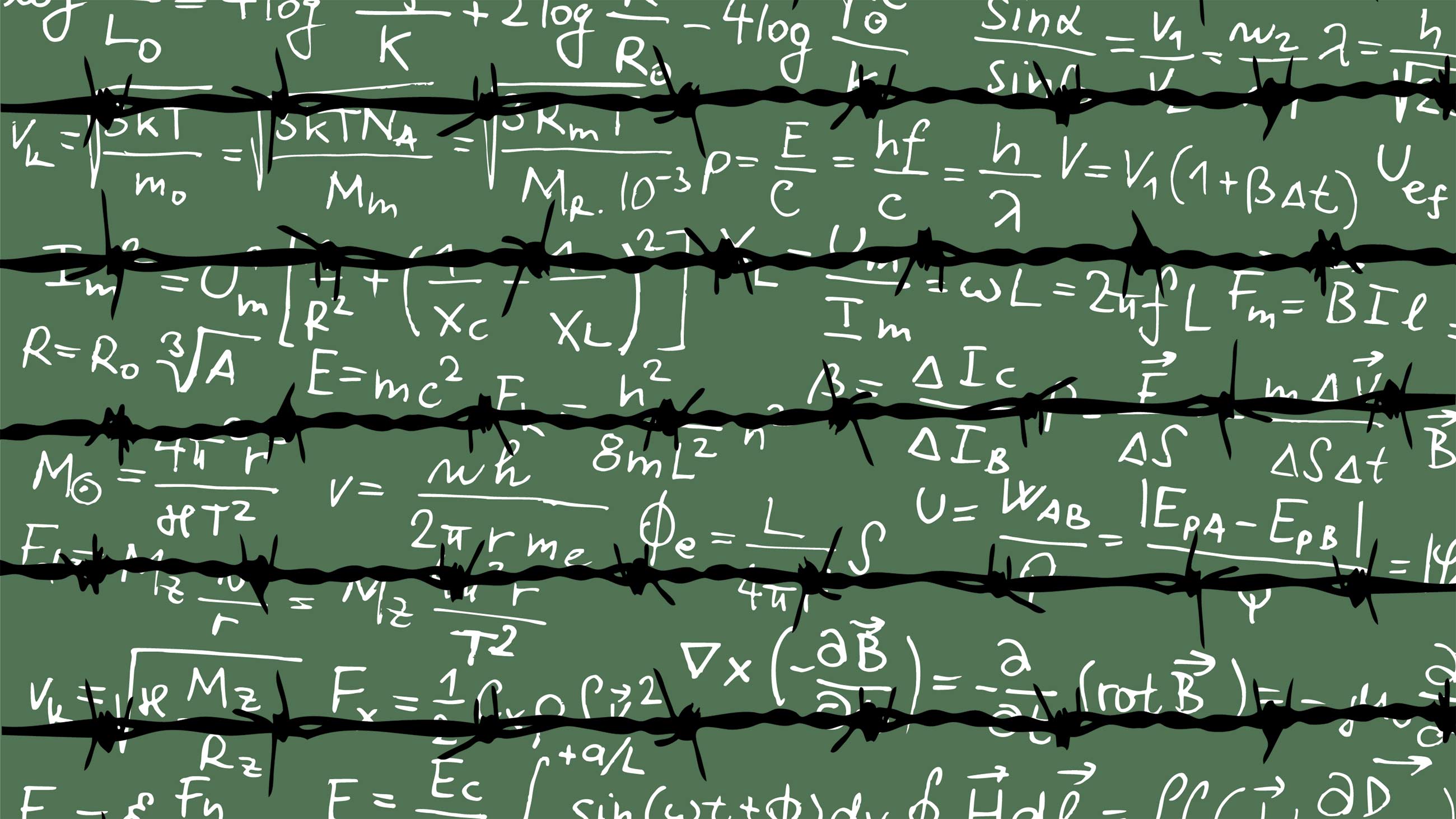- cross-posted to:
- hackernews@lemmy.bestiver.se
- cross-posted to:
- hackernews@lemmy.bestiver.se
Prejudice and anti-science ideology destroyed the world’s leading math department. It couldn’t happen here, could it?
In 1934, David Hilbert, by then a grand old man of German mathematics, was dining with Bernhard Rust, the Nazi minister of education. Rust asked, “How is mathematics at Göttingen, now that it is free from the Jewish influence?” Hilbert replied, “There is no mathematics in Göttingen anymore.”
“There is no mathematics in Göttingen anymore”: the German math giant David Hilbert.
Visual: Shelby White and Leon Levy Archives Center, Institute for Advanced Study, Princeton, NJ, USA.
Or so the story goes. It is folklore at this point, a story mathematicians tell one another over coffee while exchanging knowing looks. The details vary in different retellings, but every version has Hilbert speaking this truth to power: Nazis destroyed mathematics at the University of Göttingen. “It’s one of the most well-known stories in the history of science,” says Reinhard Siegmund-Schultze, a math historian at the University of Agder in Norway. “Göttingen was so dominant in mathematics internationally.”
In 1933, that dominance came crashing down. On April 7, two months after Hitler became chancellor, Germany passed a law making it illegal for Jews — or rather those considered Jewish by the Nazis — and Communists to hold civil service jobs, with a few exceptions including for people who had served Germany in World War I. That immediately forced several Göttingen mathematicians from their jobs. The crisis snowballed, and over the course of the year, a total of 18 left or were driven out.
By the time of Hilbert’s legendary dinner with Rust, Germany had lost its status as the world’s foremost country for mathematical research. America took its place — and today, though globalization has spread the wealth, the U.S. has retained its eminence. From Princeton and Columbia to Berkeley and Stanford, it’s hard to find a great math department in the United States that was not shaped in part by European mathematicians who came to or stayed in the U.S. because of the Nazis.
As a new administration with a pronounced anti-science bent takes power in the United States, some scholars are recalling what happened at Göttingen as a cautionary tale. Donald Trump is not Hitler, of course, and “history doesn’t repeat,” as Siegmund-Schultze puts it. Still, he quickly adds, “One also knows from pain that mankind doesn’t really learn from history. Otherwise we wouldn’t do all the same foolish things all the time.”
American democracy is far stronger and longer-lived than was Germany’s between the wars. But we should take the similarities seriously. “I think what you see in both cases is this disaffection of the lower middle class,” says Julia Ault, an expert on German history at the University of Utah. “Part of their status rests on being better than someone else.” Lower-middle-class Germans in 1930 might have felt a loss of status if they perceived Jews to be advancing more quickly than they were. Ault sees a parallel to what some white people in rural America feel: They perceive immigrants as coming in and rising more quickly than they are.
Rather than a drastic Nazi-style crackdown on free speech, what is alarming many scholars today is the idea of a post-truth world, in which evidence doesn’t matter if a story reinforces your beliefs.
“In some sense every scholar is at risk,” says Robbert Dijkgraaf, the current director of the Institute for Advanced Study, which attracted many of the scientists and mathematicians who fled Göttingen and other German universities in the 1930s. “It’s not so much that people are persecuted because of their beliefs, but there is a certain trend where careful reasoning, the search for truth, all the delicacies of having a balanced point of view, acting on facts, being honest about what you do and don’t know, your uncertainty, all these values we have in science and scholarship are at risk.”
The dismissal of experts and the appeals to populism are dangerous, says Ault. “It’s going to be hugely devastating to the EPA, to climate science.” Trump, who has called climate change a Chinese hoax, has asked for the names of scientists who study global warming. His transition team backpedaled on the request, but it was unsettling for employees of the Department of Energy. More recently, it was reported that his administration issued a temporary ban on external communication from the EPA and blocked the agency from awarding new grants or contracts. “It’s going to take most of our lifetimes to redo what’s going to get undone in the next four years,” Ault says. And for that reason, the political cataclysm that upended the mathematical world in the 1930s is no mere historical curiosity.
Left, Hermann Weyl, Hilbert’s successor at Göttingen and one of the German émigrés who helped build the Institute for Advanced Study. Visual: Shelby White and Leon Levy Archives Center, Institute for Advanced Study, Princeton, NJ, USA.
Right, Abraham Flexner, a founder and guiding spirit of the institute. Visual: Shelby White and Leon Levy Archives Center, Institute for Advanced Study, Princeton, NJ, USA.
Carl Friedrich Gauss, one of the greatest mathematicians of all time, helped establish Göttingen’s prominence in the early to mid-19th century. The tradition was continued by a legion of people whose names are sprinkled throughout calculus and physics textbooks today: Riemann, Dirichlet, Schwarz, Klein, Minkowski, Landau, Noether, and Hilbert, who had to a large extent set the mathematical research agenda of the 20th century with his 1900 list of 23 unsolved problems he thought mathematicians should devote themselves to in the new century. Richard Courant, who was part of the 1933 flood of mathematicians leaving Göttingen and for whom a New York University institute of mathematical sciences is now named, helped secure funding from the Rockefeller Foundation for a new building to house the mathematics institute at Göttingen. It opened in 1929, and for the next few years, mathematics in Göttingen continued to thrive.
Providentially, the institution that would in many ways take Göttingen’s place — as a home not just for world-class mathematicians but for German Jewish ones — was being born at just that moment, in Princeton, New Jersey.
The Institute for Advanced Study, known to mathematicians and scientists simply as “the institute,” was founded in 1930 by the Bamberger family, who had sold their department store to Macy’s shortly before the stock market crash in 1929 and had thus managed to prosper through the Great Depression. At the time, many American institutions of higher education were anti-Semitic, and the Bambergers’ initial vision was to create a medical school that did not discriminate against Jews. Instead, Abraham Flexner, who had studied and written about medical and higher education, convinced them that an institute dedicated to basic research in mathematics and science was more important. He ended up joining them as a founder.
The institute opened in 1933 and was housed in Princeton University’s Fine Hall, home of its mathematics department, until the institute’s own facilities opened in 1939. (This has led to decades of confusion about the institute’s relationship with Princeton. They are in the same town, but they have no formal affiliation.) The timing could not have been better for the German Jews whose jobs at home had been abolished. Flexner and the trustees decided, with the help of the Rockefeller Foundation, to create positions for exiled researchers at the institute.
It wasn’t an easy sell. American anti-Semitism was not the only issue; unemployment was high, and some believed that “every foreign scholar imported means an American out of a job,” as the MIT mathematics professor Norbert Wiener described it. He feared that “any appointment for more than a year would cause a feeling of resentment that would wreck our hopes of doing anything whatsoever.” Dijkgraaf, the IAS’s current director, says the institute had to walk a fine line. “All these efforts had to be done in a very subtle way,” he says. For one, each grant was fairly modest. But by getting a position at the institute, even a temporary one, a researcher “could at least get a visa and would have a foothold” as they worked to find jobs elsewhere in the U.S., says Dijkgraaf. “There was this joke that the institute was a little bit like an Ellis Island for these scholars at risk.”
In a 1939 report to the Institute for Advanced Study trustees, Flexner wrote, “Fifty years from now the historian looking backward will, if we act with courage and imagination, report that during our time the center of gravity in scholarship moved across the Atlantic to the United States.” And he was right. “In the end America profited hugely,” says Siegmund-Schultze, who adds that “many of these developments would have happened anyway even without the Nazis.” After all, America had more resources, the population was growing, and the nation was starting to replace private financing for the fundamental sciences with public financing — a large part of the reason the U.S. was able to retain its mathematical and scientific dominance after World War II. Nevertheless, America’s willingness to take in scholars fleeing the Nazis provided a boost to its rising scientific establishment and caused the balance of power to shift almost overnight.
“We now think of it as a given that the United States is a center of research and scholarship,” Dijkgraaf says. “It wasn’t at all in the 1930s. It was this brave act and this generosity that allowed this to happen.”
Albert Einstein is the most famous émigré scientist who ended up at the institute as a result of that generosity. Other luminaries included John von Neumann, a Hungarian mathematician, computer scientist, and physicist who worked on the Manhattan Project; Hermann Weyl, who had been Hilbert’s successor at Göttingen; and Kurt Gödel, who changed the way mathematicians think about certainty.
As that star-studded list suggests, taking in these refugees was not simply an act of generosity. Oswald Veblen, who had been influential in getting the institute to Princeton in the first place and had become one of the first scholars at the institute, “had a very clear vision that this was a win-win situation,” says Dijkgraaf. “He could help the refugees, but it was also a unique opportunity to strengthen mathematics in the United States.”
John von Neumann, who worked at Göttingen in the 1920s, became a pillar of the Institute for Advanced Study. He annotated this manuscript for publication. (From the institute’s Box 35, File: von Neumann, John: Publication of Collected Works.)
Institutions are fragile. They are easier to destroy than build. A few months of Hitler’s policies unraveled two centuries of mathematical progress in Göttingen. That university, and Germany more broadly, never fully recovered. As von Neumann correctly predicted in 1933, “If these boys continue for only two more years (which is unfortunately very probable) they will ruin German science for a generation — at least.”
America benefited hugely from the intellects of displaced mathematicians and scientists 80 years ago. And while America’s scientific institutions are not facing the same sudden existential threat Göttingen did in April 1933, their work and their scholars can still be seriously undercut by anti-science and anti-intellectual policies. It would be a tragic irony if American mathematics and science, which owe much of their status and success to the German prejudices of another era, were brought low by a kindred set of attitudes in this one.
Evelyn Lamb is a writer based in Salt Lake City. She taught mathematics and math history at the college level before leaving academia to pursue writing full time. She was AAAS mass media fellow at Scientific American in 2012 and has written for outlets including Scientific American, Nature News, the Smithsonian Magazine website, and Slate.
Donald Trump is not Hitler, of course, …
Well, that’s certainly not for lack of trying.



